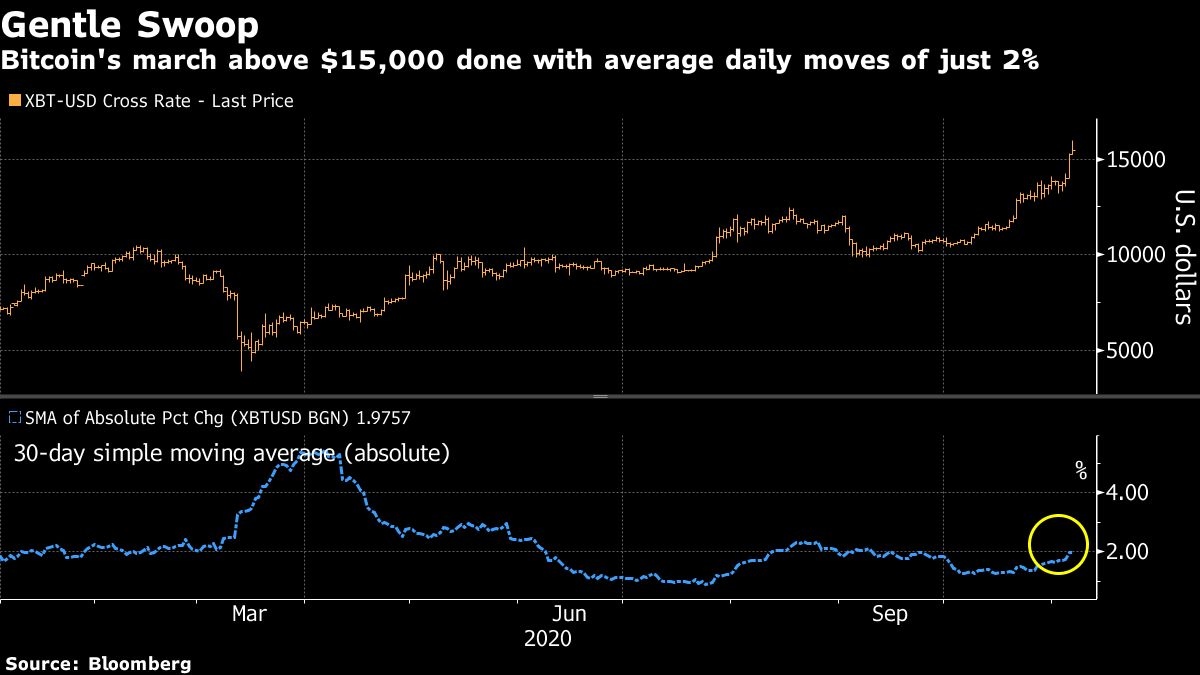Nov 6, 2020
Bitcoin hits US$15,500 as post-election rally loses some steam
, Bloomberg News
Gold could be headed for US$7,000 by 2025: Strategist
Bitcoin extended recent gains in Friday trading, continuing its slow progress toward US$16,000 after joining a slew of assets from oil to Asian stocks that rallied in the wake of the U.S. election.
While the token’s weekly advance is starting to look parabolic at 14 per cent, on Friday the move roughly matched its daily average for the past month of about two per cent. That’s less than half of the swings notched in the depths of pandemic in March, and well below the average 30-day volatility the digital asset has displayed in more than a decade of trading.
The gains took Bitcoin above US$15,500 for the first time since early 2018, though by 6:29 a.m. in New York it was at US$15,465.88.
To bulls, the steady gain is adding to the perception that the biggest digital token is gaining more mainstream credibility.
Recent institutional endorsements include Square and investors like Paul Tudor Jones, while massive central bank easing has added to the backlash over the established monetary order.






